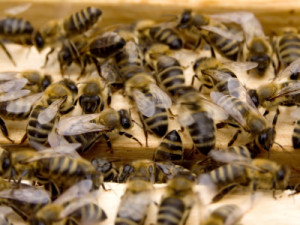We care for our pets as we do our own children. They rely on us for food, shelter, safety, healthcare, and, most importantly, love and companionship (which they share with us in return). Our furry family members have many of the same needs as we do when it comes to keeping them healthy and safe.
Whether you are taking a trip to the dog park or hanging out around the yard, it is important to know what to look out for in terms of insects and parasites that can make your pet ill. Animals have allergies, skin sensitivities, and are susceptible to many of the same preventable illnesses as humans. In the summer, common pests like mosquitos, wasps, bees, and ticks can all cause harm to our cats and dogs.
Mosquitos Put Your Dog at Risk for Heartworms
Mosquitos are not only an annoyance for pets and people. They also carry heartworms, which are fatal if left untreated. A dog-owner that knows the dangers of heartworms should also know that prevention is easy. There are readily available vet-recommended pills, creams, and injection treatments to protect your dog from heartworms.
All it takes is one mosquito bite to transmit heartworms, so it is important to make sure your new puppy or dog has already been treated. If not, make an appointment at the vet’s office as soon as possible.
Other animals are at risk for different health problems associated with mosquitos. Cats, for example, are susceptible to mosquito bite hypersensitivity, which is an over-active immune response to the bite itself. Mosquito bite hypersensitivity will cause the feline to gnaw and scratch incessantly, often leaving exterior lesions, patches of exposed skin, and an increased risk of skin infections. Areas that are especially sensitive, like a cat’s nose and ears, may look raw and painful.
If you suspect your cat may have this problem, your vet can provide you with medicated ointments and may also recommend that you keep your cat indoors in the summer. Hopefully, your kitty won’t need to wear the dreaded cone. Important: Never use insecticides like pyrethrins or permethrins on your cat. Certain flea, tick, and mosquito control medications that may be okay for dogs are toxic to cats.
Mosquitos are a hard pest to prevent, but there are a few things that homeowners can do to keep their pets safe.
- If you’re taking your pet to the park, avoid swampy areas with a lot of marshy water and tall grass. This is a mosquito breeding ground.
- After summer rains, dump out any standing water in plant pots, bird feeders and baths, and pool covers.
- Light citronella candles when you’re planning to be out in the yard with your pets.
Mosquitos are hard to control. If mosquitos are a persistent problem for you in the summer months, consider hiring professional pest management company to make sure your outdoor areas remain mosquito-free.
 Keep Your Pet Away from Bee and Wasp Nests
Keep Your Pet Away from Bee and Wasp Nests
What looks like an obvious danger to humans may look like a toy or prey to a dog or cat. Bees and Wasps are a prevalent part of summer. These stinging insects are fine to have around the garden and are not harmful on their own, but when there is a nest around, you face a safety hazard.
A dog or cat may get too close or try to play with the nest, which will agitate aggressive wasps, yellow jackets, and bees. These creatures are very social, and will often attack in groups if they think their nests are in danger.
If your pet gets stung on the exterior of his or her body, you may see some minor swelling and will need to remove the stinger with a pair of tweezers. You can use over counter creams or an ice pack to help make your furry friend feel better. However, a sting in the mouth or large quantities of bee or wasp stings will require a trip to the vet.
If your pet has obviously been stung a number of times and there is excessive swelling, do not try to pull out all the stingers yourself. Call an emergency veterinary clinic immediately.
Look for Signs of Ticks and / or Lyme Disease in the Summer
Dogs are just as susceptible to Lyme Disease as people. Lyme is carried by ticks and can cause numerous lifelong health problems. Ticks can be found anywhere in the U.S., but they are found primarily in wooded areas with a lot of high grass.
If your dog spends a lot of time in areas like this, take a moment after each outing to check for ticks by brushing or combing long fur, or by simply running through the fur with your hands. A tick is a dark colored bug with 8 legs, and can attach themselves to the dog’s fur. They range in size, but some can be quite small.
Steps to take if you find a tick on your pet:
- Put on a pair of gloves.
- Grab a pair of tweezers or a tick remover if you have one.
- Pull the bug away from your pet’s skin or fur carefully.
- Do not discard of the tick! This is very important. Put it in a container and keep it somewhere safe. If your pet shows signs of illness anytime soon after you find the tick, bring the pet and the tick to your vet. This will help the doctor determine whether or not your pet is at risk for Lyme Disease.
